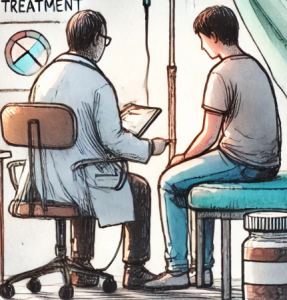
Emergency SNAP Benefits Reduced Food Hardship for Many Families—But Not All
In 2020, as the world grappled with the sudden onset of the COVID-19 pandemic, a quiet yet impactful change occurred in the United States: the federal government temporarily increased the amount of food purchasing assistance available to low-income households through the Supplemental Nutrition Assistance Program (SNAP). This initiative, known as emergency allotments, aimed to help millions of families put food on the table during unprecedented economic turmoil.
Fast forward to today, and new research reveals just how effective this policy was—and where it fell short. The findings, drawn from data spanning 2016 to 2022, show that these emergency benefits significantly reduced food hardship for many families, especially those with Hispanic and White children. However, for families with Black children, the benefits didn’t provide the same level of relief. This gap raises important questions about the equity of such policies and the ongoing struggle to ensure all communities have access to adequate food.
Understanding the Impact of Food Hardship
Food hardship, a term that encompasses both food insecurity and the inability to afford enough nutritious food, is a severe issue in the U.S., particularly among households with children. When families can’t access sufficient, healthy food, it leads to a cascade of negative outcomes: poor physical health, heightened stress, anxiety, and in children, lifelong consequences like developmental delays and chronic health problems.
For decades, SNAP has been the backbone of America’s strategy to combat food insecurity. However, as effective as SNAP is, it’s not perfect. Some families still slip through the cracks, particularly during times of crisis, when food prices rise and jobs disappear. This was particularly evident during the pandemic, when the demand for food assistance soared.
Recognizing the looming crisis, the federal government took swift action. By March 2020, all states were granted waivers to provide the maximum possible SNAP benefit to all participants, regardless of their income level. This move was a lifeline for many families, but as the new study reveals, its benefits were not evenly distributed.
A Closer Look at the Findings
The study examined data from the National Survey of Children’s Health, focusing on families with incomes at or below 130% of the federal poverty level—the threshold for SNAP eligibility. The researchers used a difference-in-differences approach, comparing the risk of food hardship before and during the implementation of the emergency allotments.
The results were telling: overall, the emergency benefits reduced the risk of food hardship among SNAP-participating families compared to those who were eligible but did not participate. Specifically, the risk of food hardship decreased by 12% among participating households, a significant improvement that highlights the effectiveness of the emergency allotments.
However, the impact was not uniform across racial and ethnic groups. While households with Hispanic and White children saw notable decreases in food hardship, the same was not true for households with Black children. For these families, the risk of food hardship remained stubbornly high, even with the additional benefits.
Why Did the Policy Fall Short for Black Families?
The lack of impact among Black households raises critical questions about the structural inequities that persist in our food systems. Several factors may explain this disparity:
- Segregated Food Environments: Many predominantly Black communities face what are known as “food deserts”—areas with limited access to affordable, nutritious food. Even with increased SNAP benefits, these families might still struggle to find and afford healthy options.
- Pre-Existing Economic Disparities: The study found that households with Black children were more likely to have extremely low incomes, which means they were already receiving the maximum SNAP benefit before the emergency allotments. Since these households didn’t see an increase in their benefits, the policy provided less additional support compared to other groups.
- Higher Costs of Living: Black families often face higher food prices in their communities, meaning that even increased SNAP benefits might not have stretched as far as they did for other households.
These factors point to a broader issue: while emergency policies can provide critical short-term relief, they don’t always address the underlying inequities that create disparities in the first place.
Why This Matters for Public Health
For public health practitioners and researchers, these findings underscore the importance of designing policies that consider the diverse needs of different communities. Food insecurity is not just a matter of poverty; it’s also about the structures that limit access to resources based on race, geography, and socioeconomic status.
As we move forward, there’s a clear need to ensure that policies like SNAP are not just expanded but also tailored to meet the specific needs of all communities. This might involve more targeted support for areas with high food costs, additional resources for families already receiving maximum benefits, or broader changes to the food system itself, such as incentivizing grocery stores to open in underserved areas.
Join the Conversation
- What are your thoughts on the effectiveness of emergency SNAP benefits during the pandemic? Share your experiences or observations in the comments below or on social media.
- How do you think we can better tailor food assistance programs to meet the needs of all communities? Join the discussion and let us know your ideas!
This research powerfully reminds us that while emergency measures can mitigate the immediate impacts of crises, we must continually strive to build more equitable systems. Only then can we ensure that all families—regardless of race or income—have the food security they deserve.
Empower Your Network – Subscribe and Share!
Unlock key insights with ‘This Week in Public Health.’ Subscribe for free and share to drive change as part of a dedicated community. If you liked this blog, please share it! Your referrals help This Week in Public Health reach new readers.



